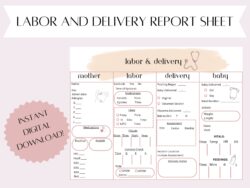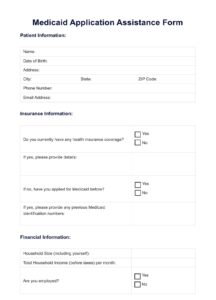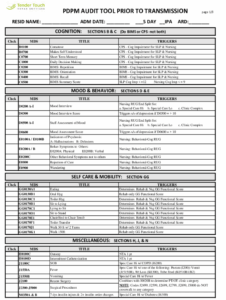Nursing Assessment Documentation Template for Respiratory
As a nurse, you know that meticulous documentation is the backbone of quality patient care. When it comes to respiratory assessments, clear and concise records are especially vital. They allow for accurate monitoring of patient status, facilitate effective communication among healthcare providers, and provide a legal record of care provided. But sometimes, staring at a blank screen wondering where to start can be a hurdle. That’s where a well-designed nursing assessment documentation template for respiratory issues comes in handy. It’s like a pre-flight checklist ensuring you gather all the essential information.
Think of it as your trusty sidekick, guiding you through the process of assessing a patient’s respiratory system and documenting your findings in a structured and comprehensive manner. It’s not just about ticking boxes; it’s about creating a narrative that paints a clear picture of the patient’s respiratory health. A good template prompts you to consider all the relevant aspects, from subjective complaints to objective data, ensuring nothing gets overlooked. This leads to better informed decisions and ultimately, improved patient outcomes.
In this article, we’ll delve into the world of respiratory assessment documentation, exploring the key elements of an effective template and offering practical tips for creating and utilizing it. We’ll also discuss the importance of accurate and thorough documentation and how it contributes to optimal patient care. So, whether you’re a seasoned nurse looking to refine your documentation practices or a student just starting out, this guide will provide you with the knowledge and tools you need to excel in respiratory assessment documentation.
Why is a Structured Respiratory Assessment Documentation Template Essential?
Imagine trying to build a house without a blueprint. It’s possible, sure, but the chances of ending up with a structurally sound and functional home are slim. Similarly, attempting to document a respiratory assessment without a structured template can lead to incomplete or disorganized information, potentially compromising patient care. A well-designed template acts as your blueprint, guiding you through the assessment process and ensuring you capture all the necessary data points.
One of the primary benefits of using a respiratory assessment documentation template is consistency. By following a standardized format, you ensure that all relevant information is collected for every patient. This consistency makes it easier to compare assessments over time, track trends, and identify potential changes in the patient’s respiratory status. It also simplifies communication among healthcare professionals, as everyone is familiar with the format and knows where to find specific information.
Another key advantage is efficiency. A template streamlines the documentation process, saving you valuable time and energy. Instead of having to recall every element of the assessment from memory, you can simply follow the prompts on the template. This allows you to focus your attention on the patient, providing more attentive and compassionate care. Furthermore, it minimizes the risk of forgetting important details, ensuring a more complete and accurate record.
Moreover, a comprehensive nursing assessment documentation template for respiratory related problems promotes patient safety. By prompting you to assess key indicators such as oxygen saturation, respiratory rate, breath sounds, and cough characteristics, the template helps you identify potential respiratory distress early on. This early detection can lead to timely interventions, preventing serious complications and improving patient outcomes. It also ensures you document any interventions taken and their effects, creating a clear audit trail.
Beyond immediate patient care, accurate and detailed documentation serves a crucial legal purpose. Your documentation becomes a permanent record of the care you provided. In the event of a legal dispute, this record can be used to demonstrate that you followed appropriate protocols and provided competent care. A well-structured template helps ensure that your documentation is thorough, accurate, and legally defensible. This provides peace of mind and protects you and your organization from potential liability. A respiratory assessment documentation template for respiratory issues is a vital tool for any nurse providing respiratory care.
Key Components of an Effective Respiratory Assessment Documentation Template
Now that we’ve established the importance of a structured template, let’s explore the key components that make it effective. A comprehensive template should include both subjective and objective data, as well as sections for interventions and evaluation.
The subjective data section should capture the patient’s perspective on their respiratory symptoms. This includes information such as shortness of breath, cough, chest pain, and any other related complaints. It’s important to document the onset, duration, severity, and aggravating or alleviating factors of each symptom. This paints a complete picture of the patient’s experience. For example, documenting “Patient reports shortness of breath that began 3 days ago, rated 7/10, worse with exertion, relieved by rest” provides much more valuable information than simply noting “Shortness of breath.”
The objective data section should include all the measurable and observable findings from your physical assessment. This includes vital signs (respiratory rate, oxygen saturation, heart rate, blood pressure), auscultation of breath sounds (wheezes, crackles, rhonchi), chest expansion, cough characteristics (productive/nonproductive, color and consistency of sputum), and use of accessory muscles. Be precise and detailed in your descriptions. For example, instead of writing “Breath sounds normal,” specify “Clear breath sounds bilaterally, no adventitious sounds.”
The template should also have a section for documenting interventions and their effectiveness. This includes oxygen therapy, medication administration (bronchodilators, corticosteroids), suctioning, postural drainage, and any other measures taken to improve the patient’s respiratory status. Document the dosage, route, and time of administration of medications, as well as the patient’s response to each intervention. For example, “Administered albuterol nebulizer treatment. Patient reports decreased shortness of breath and improved ease of breathing.”
Finally, the template should include a section for evaluation and follow-up. This is where you document the patient’s progress and any changes in their respiratory status. Note whether the interventions were effective and whether any further interventions are needed. This section should also include plans for ongoing monitoring and follow-up care. Regularly using the nursing assessment documentation template for respiratory ensures that changes in patient condition are quickly noticed.
By incorporating these key components into your nursing assessment documentation template for respiratory, you can create a powerful tool that enhances patient care and improves communication among healthcare providers. Remember to tailor the template to your specific patient population and clinical setting to ensure its relevance and usability.
Ultimately, thorough documentation protects both patients and caregivers. It ensures the right information is available when needed, leading to better decisions and ultimately, better outcomes.
Investing the time to create and utilize a comprehensive respiratory assessment documentation template is an investment in quality patient care and professional accountability. It’s a win-win situation for everyone involved.



